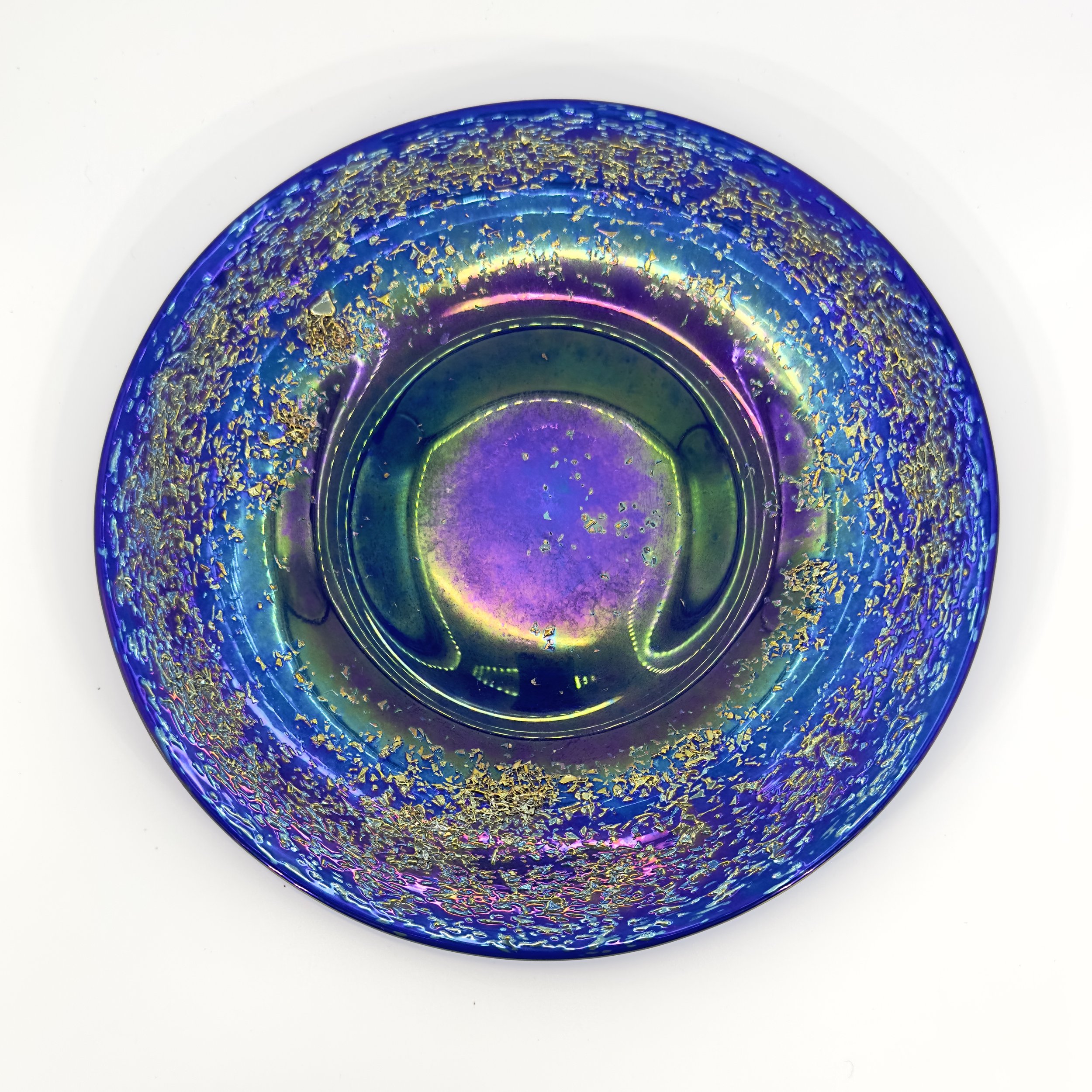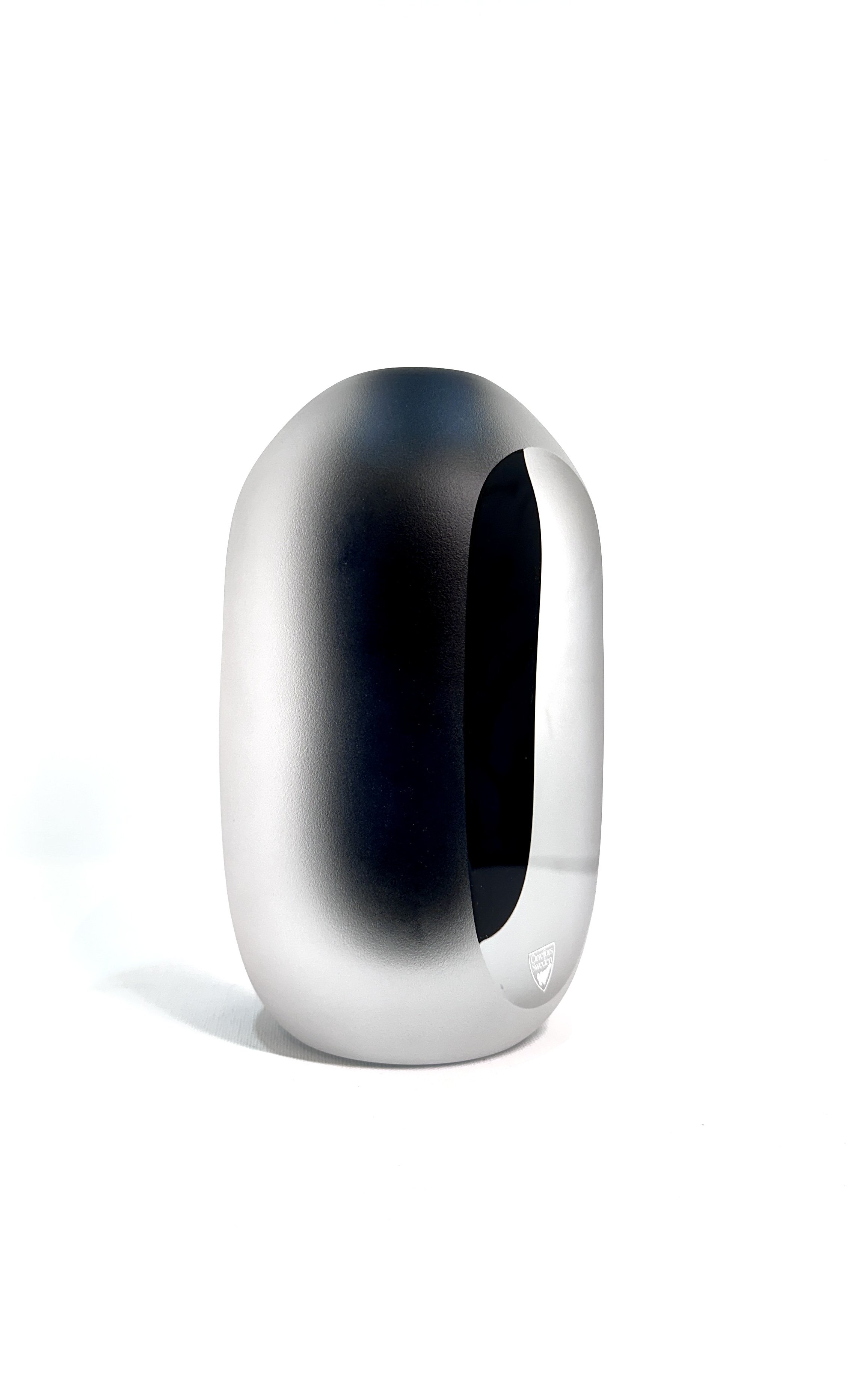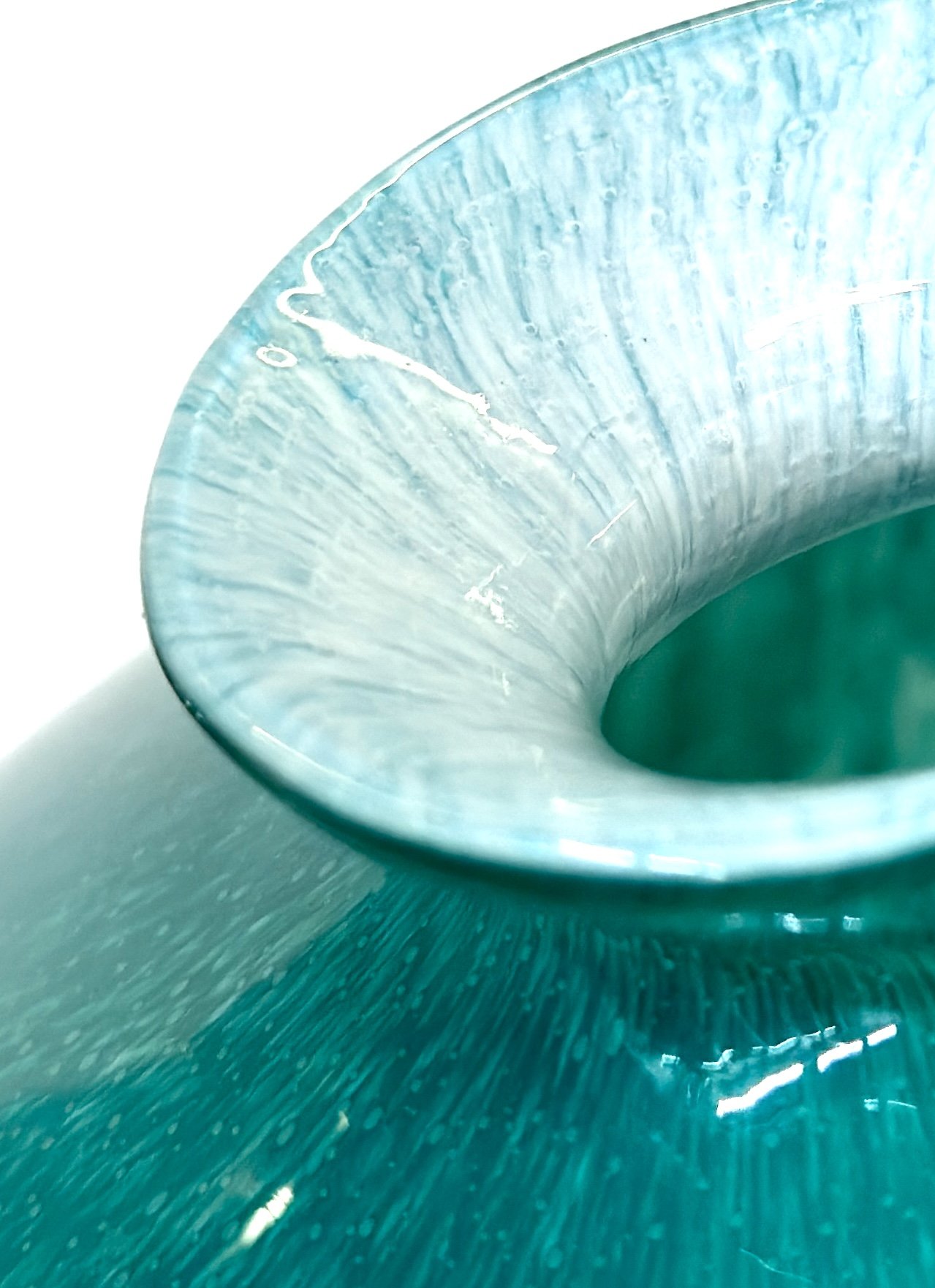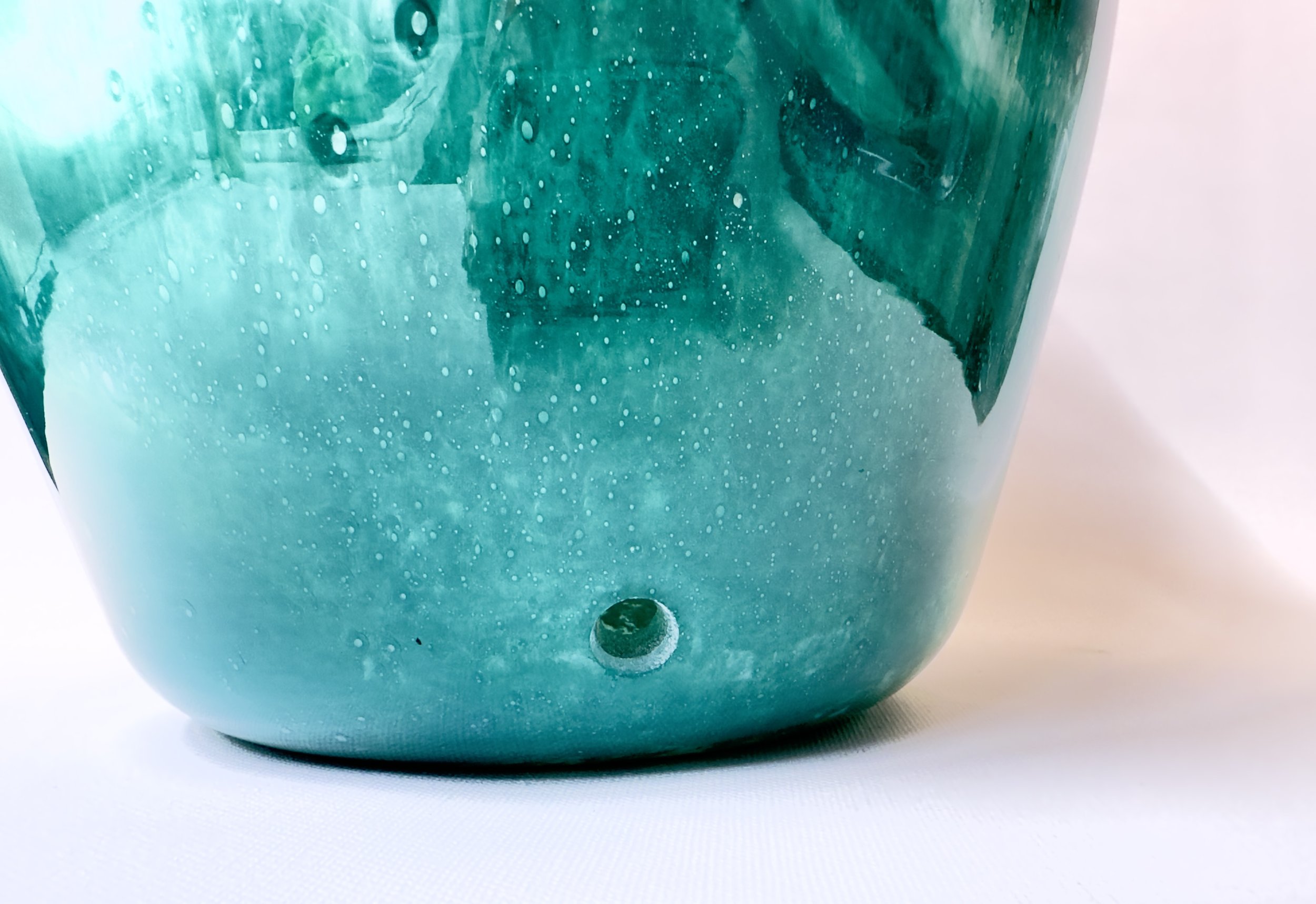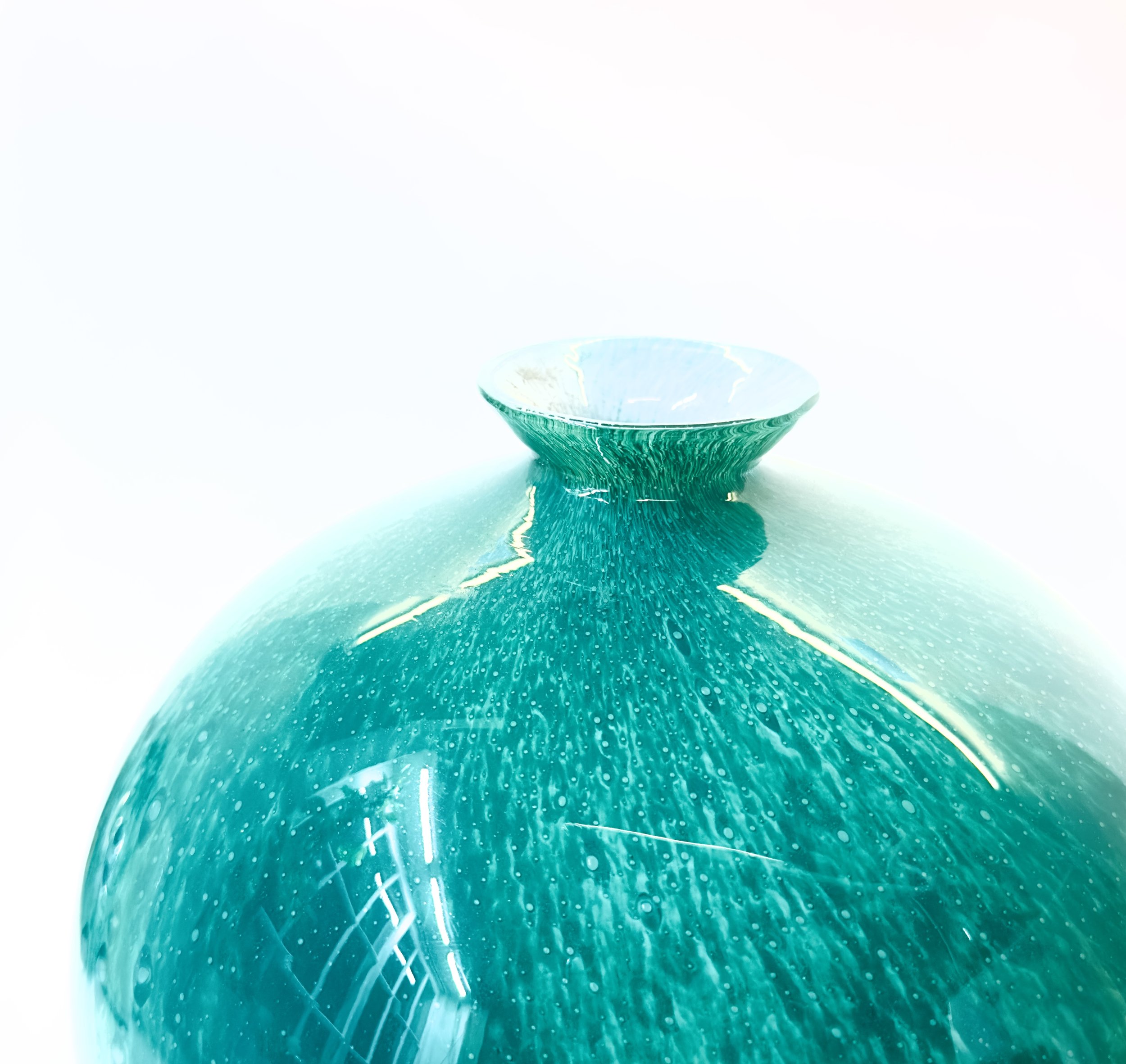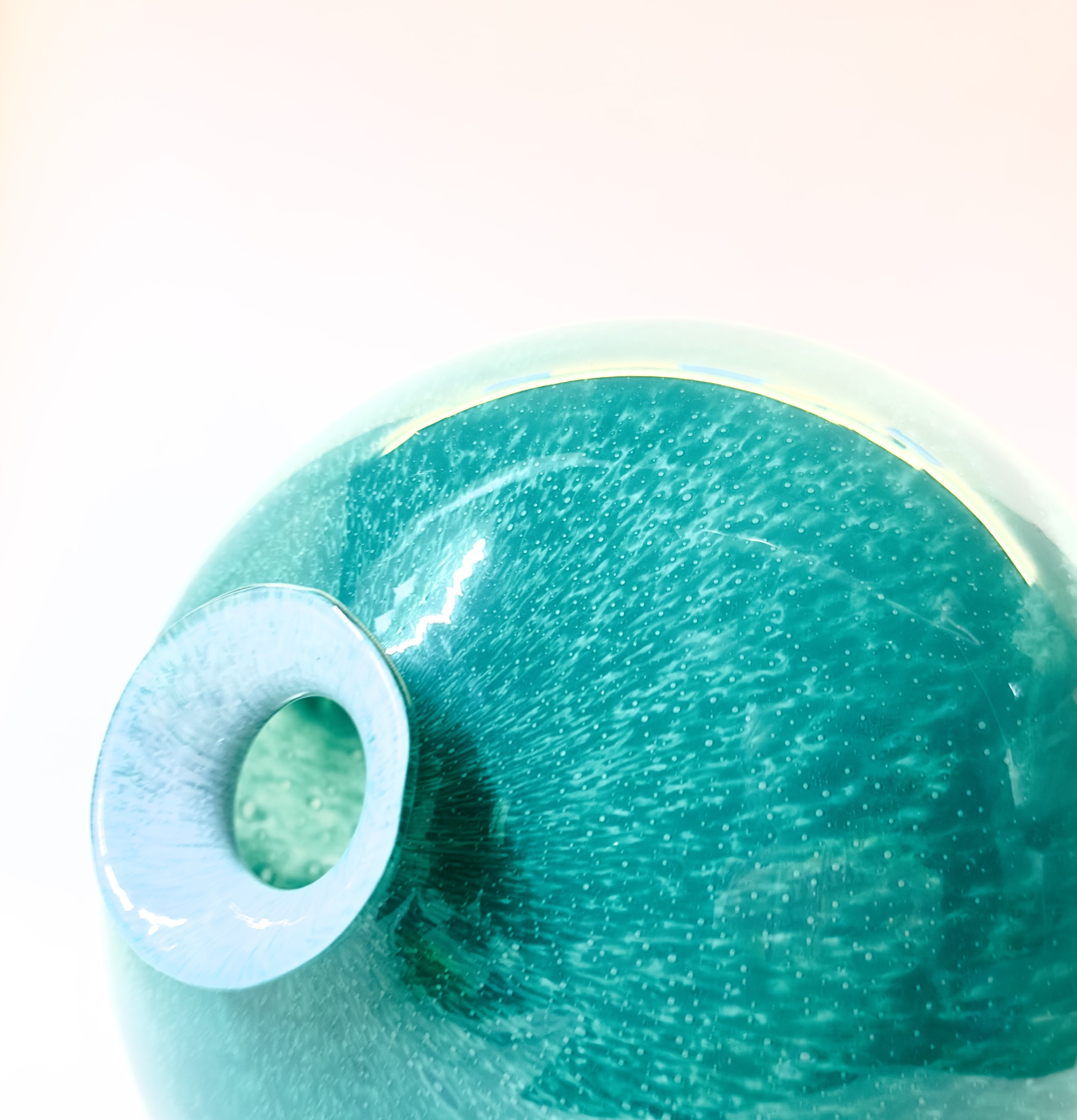 Image 1 of 10
Image 1 of 10

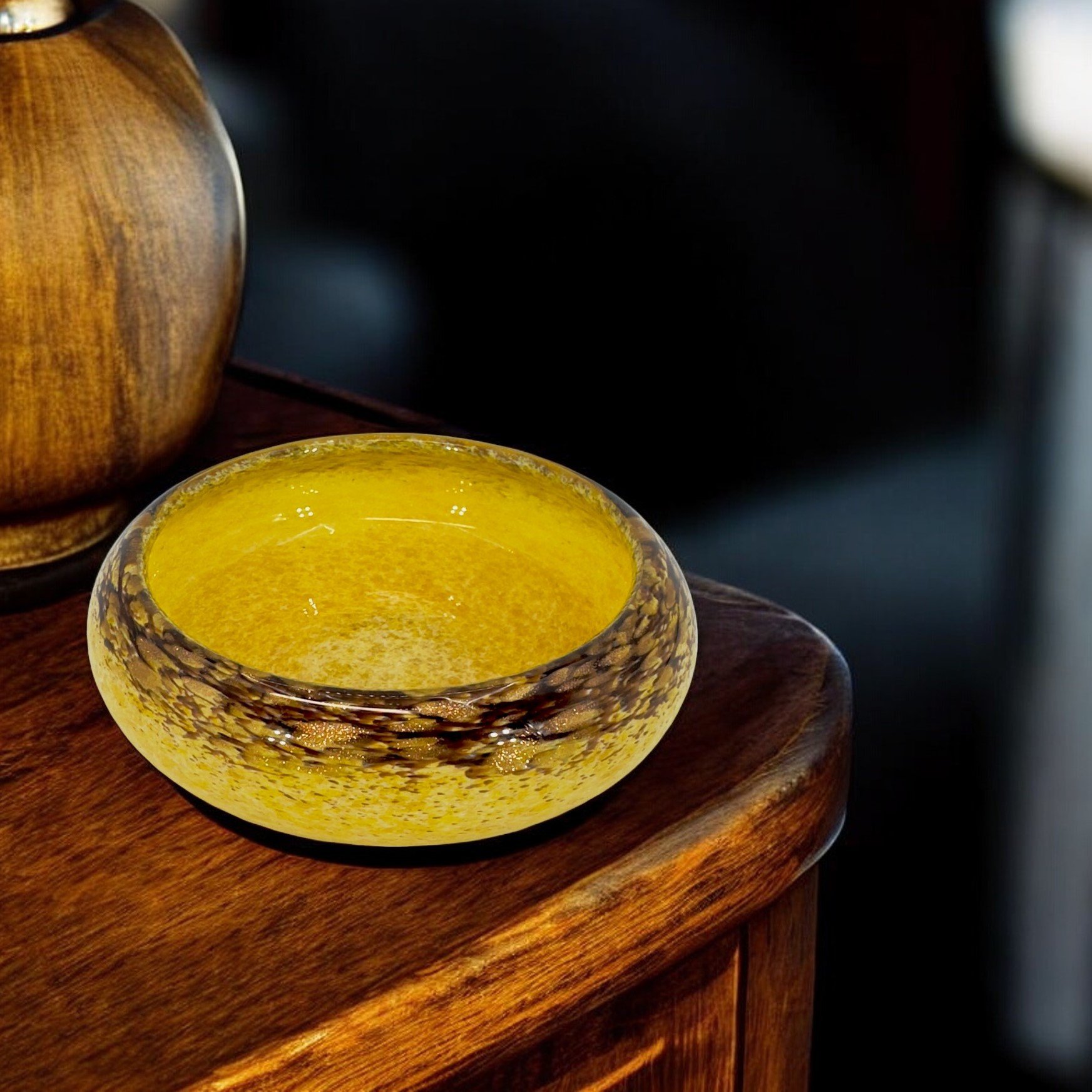 Image 2 of 10
Image 2 of 10

 Image 3 of 10
Image 3 of 10

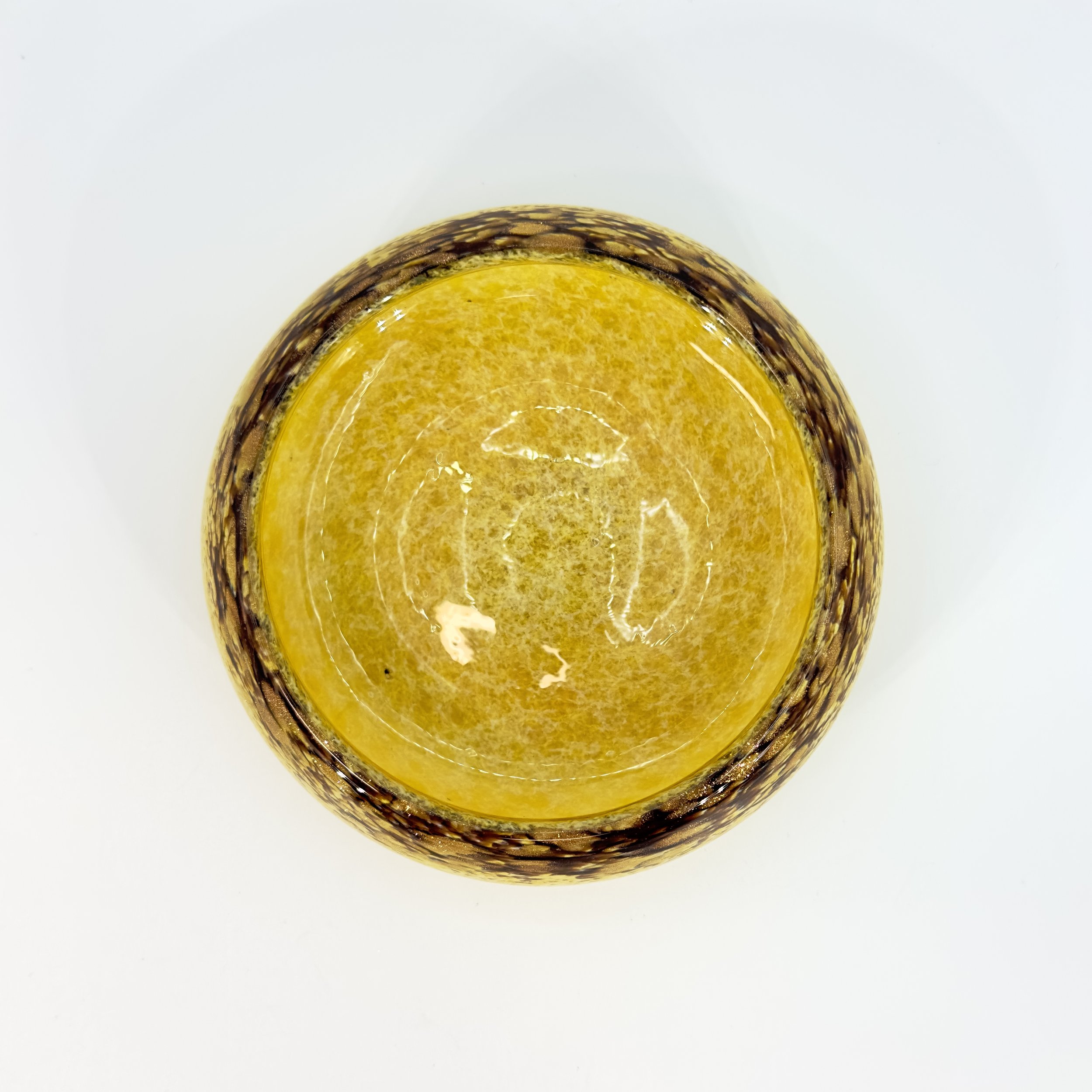 Image 4 of 10
Image 4 of 10

 Image 5 of 10
Image 5 of 10

 Image 6 of 10
Image 6 of 10

 Image 7 of 10
Image 7 of 10

 Image 8 of 10
Image 8 of 10

 Image 9 of 10
Image 9 of 10

 Image 10 of 10
Image 10 of 10











Monart Small Trinket Dish / Bowl c1924-1939
This stunning small bowl features in the Victoria and Albert Museum’s glass collection, with an identical example on display in the museum’s Kensington Glass Room. It is the result of the creative partnership between Scottish glass factory Moncrieff and master glassmaker Salvador Ysart and his sons.
After settling in Scotland in 1922, Spanish glassmaker Salvador and his sons Paul, Augustine, Vincent and Antoine partnered with well-established glass factory Moncrieff to produce their unique, high-quality designs. The names Moncrieff and Ysart came together to denote the Monart collection, which was produced between 1924-1939.
The Ysarts went on to become major influences in art glass, later forming their own company Vasart. Their legacy continues among glass enthusiasts who celebrate, covet and collect their works.
This small dish is in a golden yellow glass, deepening to brown around the rim, with aventurine gold inclusions. Aventurine is created by adding copper and other oxides to the glass which are heated for long periods at high temperatures and then stirred. Closing the furnace then creates an oxygen-starved reducing atmosphere which causes the development of tiny copper flakes suspended in the glass. When cooled, these reflect the light for a sparkling gold effect.
This gorgeous example is in excellent vintage condition, with its label intact on the underside of the bowl.
This stunning small bowl features in the Victoria and Albert Museum’s glass collection, with an identical example on display in the museum’s Kensington Glass Room. It is the result of the creative partnership between Scottish glass factory Moncrieff and master glassmaker Salvador Ysart and his sons.
After settling in Scotland in 1922, Spanish glassmaker Salvador and his sons Paul, Augustine, Vincent and Antoine partnered with well-established glass factory Moncrieff to produce their unique, high-quality designs. The names Moncrieff and Ysart came together to denote the Monart collection, which was produced between 1924-1939.
The Ysarts went on to become major influences in art glass, later forming their own company Vasart. Their legacy continues among glass enthusiasts who celebrate, covet and collect their works.
This small dish is in a golden yellow glass, deepening to brown around the rim, with aventurine gold inclusions. Aventurine is created by adding copper and other oxides to the glass which are heated for long periods at high temperatures and then stirred. Closing the furnace then creates an oxygen-starved reducing atmosphere which causes the development of tiny copper flakes suspended in the glass. When cooled, these reflect the light for a sparkling gold effect.
This gorgeous example is in excellent vintage condition, with its label intact on the underside of the bowl.
This stunning small bowl features in the Victoria and Albert Museum’s glass collection, with an identical example on display in the museum’s Kensington Glass Room. It is the result of the creative partnership between Scottish glass factory Moncrieff and master glassmaker Salvador Ysart and his sons.
After settling in Scotland in 1922, Spanish glassmaker Salvador and his sons Paul, Augustine, Vincent and Antoine partnered with well-established glass factory Moncrieff to produce their unique, high-quality designs. The names Moncrieff and Ysart came together to denote the Monart collection, which was produced between 1924-1939.
The Ysarts went on to become major influences in art glass, later forming their own company Vasart. Their legacy continues among glass enthusiasts who celebrate, covet and collect their works.
This small dish is in a golden yellow glass, deepening to brown around the rim, with aventurine gold inclusions. Aventurine is created by adding copper and other oxides to the glass which are heated for long periods at high temperatures and then stirred. Closing the furnace then creates an oxygen-starved reducing atmosphere which causes the development of tiny copper flakes suspended in the glass. When cooled, these reflect the light for a sparkling gold effect.
This gorgeous example is in excellent vintage condition, with its label intact on the underside of the bowl.
· Monart small bowl with aventurine gold inclusions
· C1924-1939
· Features in the V&A Museum’s Kensington Glass Room
· 11cm wide, 3cm high
· Label intact
· Origin: Scotland









